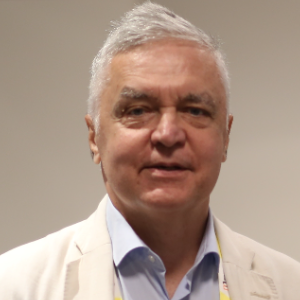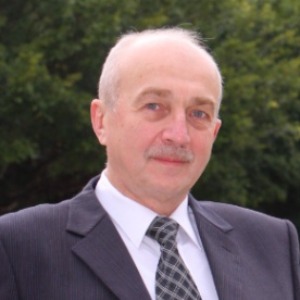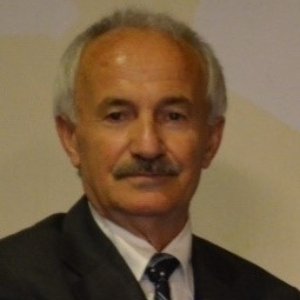Toluene biodegradation in a catalyst membrane reactor linked with manganese oxide catalysis. Toluene might degrade more quickly in a membrane biofilm reactor when manganese oxide is added. XRD, Raman, XPS, and FT-IR techniques were used to describe manganese oxide catalysts. The existence of Mn defects, adsorbed oxygen species, and the oxygen vacancy, which strongly catalysed toluene on the Mn oxides covered membranes, was confirmed by the Raman and XPS spectra. The predominant microorganisms involved in the breakdown of toluene were Pseudomonas, Hydrogenophaga, Flavobacterium, Bacillus, Clostridium, and Prosthecobacter. Toluene could be broken down into intermediate products by the catalytic action of Mn oxides, and once these products reached the biological phase, they were finally metabolised to CO2 and H2O. a catalyst membrane reactor with a manganese oxide catalytic membrane connected to the biodegradation of toluene (CMBfR). CMBfR's effectiveness for removing xylene was up to 91% throughout the course of 200 days. Toluene breakdown may be accelerated by manganese oxide added to a membrane biofilm reactor. By using XRD, Raman, XPS, and FT-IR, manganese oxide catalysts were studied. Raman and XPS spectra confirmed the presence of Mn defects, adsorbed oxygen species, and the oxygen vacancy that strongly catalysed toluene on the Mn oxides covered membranes. An technique to waste management and energy recovery that shows promise is the catalytic conversion of used rubber and plastic into aromatic hydrocarbons. The most efficient substrate was BR, with a yield improvement of 2.4 over Zr/HY. A variety of waste polymers, including waste tyres (WT), polyethylene (PE), polycarbonate (PC), and BR, were subjected to catalytic pyrolysis to investigate the effects of polymer type on aromatic hydrocarbons generation.

Stanislaw Dzwigaj
Sorbonne University, France
Dai Yeun Jeong
Asia Climate Change Education Center, Korea, Republic of
Sergey Suchkov
N.D. Zelinskii Institute for Organic Chemistry of the Russian Academy of Sciences, Russian Federation
Enrico Paris
CREA-IT & DIAEE, Italy
Rabeharitsara Andry Tahina
GPCI-ESPA Antananarivo University, Madagascar
Jiri Dedecek
J Heyrovsky Institute of Physical Chemistry , Czech Republic
Uday Som
Research and Development Engineer, Japan
Vladimir G Chigrinov
Hong Kong University of Science and Technology, Russian Federation



Title : Distant binuclear vanadium V(II) cationic sites in zeolites and their reactivity
Jiri Dedecek, J Heyrovsky Institute of Physical Chemistry , Czech Republic
Title : Advanced nanostructures for carbon neutrality and sustainable H₂ energy
Tokeer Ahmad, Jamia Millia Islamia, India
Title : Personalized and Precision Medicine (PPM) as a unique healthcare model via bi-odesign, bio- and chemical engineering, translational applications, and upgraded business modeling to secure the human healthcare and biosafety
Sergey Suchkov, N.D. Zelinskii Institute for Organic Chemistry of the Russian Academy of Sciences, Russian Federation
Title : Antibody-proteases as a generation of unique biomarkers, biocatalysts, potential targets and translational tools towards nanodesign-driven biochemical engineering and precision medical practice
Sergey Suchkov, N.D. Zelinskii Institute for Organic Chemistry of the Russian Academy of Sciences, Russian Federation
Title : Dimethyl ether synthesis from syngas over Cu-Zn/Al2O3 catalysts prepared using the Sol-Gel method
Uday Som, Research and Development Engineer, Japan
Title : Influence of various catalysts on H₂ enhancement and CO2 capture during syngas upgrading
Enrico Paris, CREA-IT & DIAEE, Italy
Title : Photoaligned azodye nanolayers : New nanotechnology for liquid crystal devices
Vladimir G Chigrinov, Hong Kong University of Science and Technology, Russian Federation
Title : Application of vanadium, tantalum and chromium single-site zeolite catalysts in catalysis
Stanislaw Dzwigaj, Sorbonne University, France
Title : Oxidation of methane to methanol over pairs of transition metal ions stabilized in the zeolite matrices
Jiri Dedecek, J Heyrovsky Institute of Physical Chemistry , Czech Republic
Title : The Concept and Implications of Low Carbon Green Growth
Dai Yeun Jeong, Asia Climate Change Education Center, Korea, Republic of